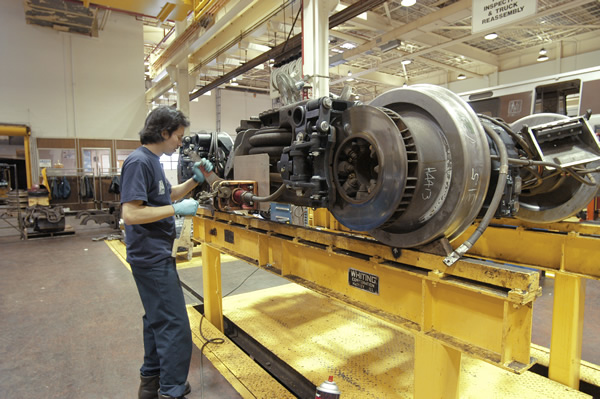But in the long history of rail, this is a rare problem, except on the Metro 7000's, as I understand it. Maybe a coincidence that Metro uses a non-standard gauge? Add in longstanding governance and openness issues, and the increasing use of opaque subcontractor manufacturing contracts. Like everyone here, I'm hoping the truth comes out eventually, but it's not guaranteed. More likely we'll find out why Tri-rail may not be fit for MiamiCentral Station!
As I understand it the problem is that wheels are sliding on the axel enough to put the wheels wider or narrower than gauge specs. "IF" that is so then the fit between axel and wheel needs to be tighter. that means that the axel will need to be thicker, the wheel opening smaller or a combination of both. Consequently, the machinery that presses the wheels onto the axel will need to be set at higher values or maybe a different machine?
The wheels are pressed to a shoulder on the axel making it imposable for the gauge to become narrower.
The manufactures of wheelsets use presses that press both wheels onto an axel at the same time. They are designed to allow the assembly wheels sets of various wheel axel diameter combinations.
But before that is done a study of interaction between the axel and wheel metals will need study. Also, the possibility of metal creep on either part also has to be considered. Certain aluminum alloys can have this problem.
Formula to calculate the proper interference fit of wheels to axels have been around for many, many years. Those formulas use measurements from the wheel bore to multiple radial points on the hub of the wheel.
The possibility of the above might be occurring due to wheel over heating because of hard braking on the wheels? Anyone know if braking is done on the wheels only or do the axels have additional disks to absorb braking energy? Additional disks are difficult to place IMO due to each axel being part of traction system.
All of WMATA's cars are fitted with ventilated disk brakes. The brake rotors (friction rings) are bolted to the ends of axels.

kitchin
But in the long history of rail, this is a rare problem, except on the Metro 7000's, as I understand it. Maybe a coincidence that Metro uses a non-standard gauge?
The gauge difference (.25 inches, 6.35mm) is in the track not the wheelsets.